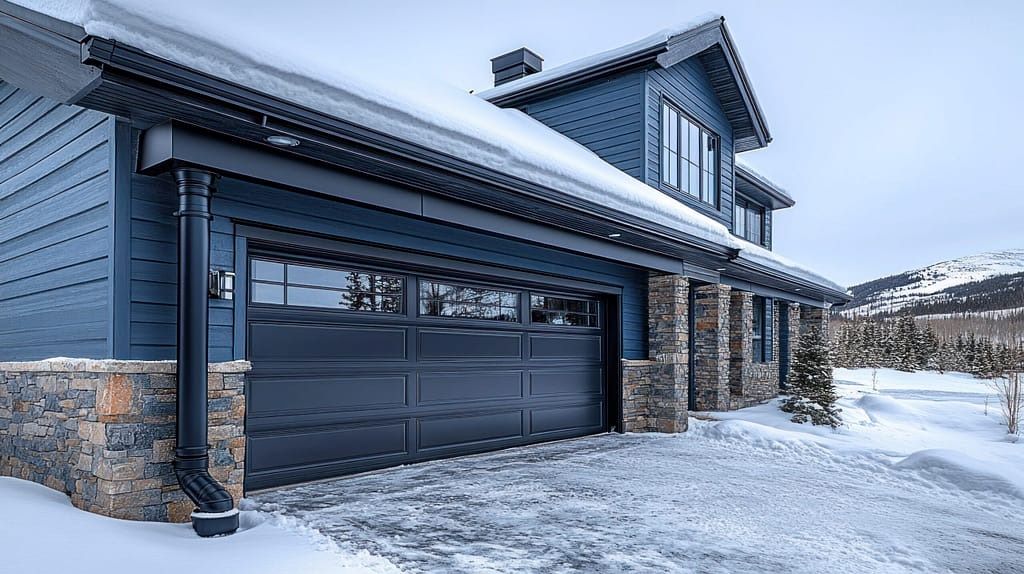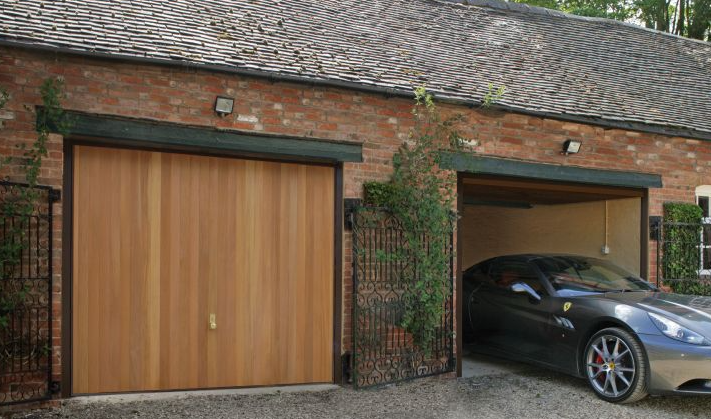Winter is coming, and with it, freezing temperatures, snow, and ice that can wreak havoc on your garage door. Preparing it for harsh conditions ensures safety, functionality, and longevity. A well-maintained garage door prevents costly repairs, keeps your home insulated, and protects your vehicles or stored items. This guide offers a comprehensive 2025 maintenance checklist to help homeowners get their garage doors winter-ready. With practical tips, expert advice, and a touch of personal insight, you’ll learn how to inspect, maintain, and troubleshoot common issues. Let’s dive into ensuring your garage door withstands winter’s chill.
Why Winter Prep for Your Garage Door Matters
Winter’s cold can strain garage door components, leading to malfunctions or breakdowns. Freezing temperatures may cause springs to contract, tracks to misalign, or lubricants to thicken, hindering smooth operation. According to a 2023 study by the U.S. Department of Energy, poorly insulated garage doors contribute to 10-15% of home heat _
Inspecting Garage Door Hardware for Wear and Tear
Start by examining your garage door’s hardware—springs, cables, rollers, and hinges. These components endure constant stress and can weaken in cold weather. Look for rust, frayed cables, or loose bolts. Tighten any loose screws and replace damaged parts immediately. A friend once ignored a frayed cable, and their door jammed mid-winter, costing $300 in repairs.
Next, check the balance. Disconnect the opener, lift the door manually, and see if it stays halfway open. An unbalanced door strains the opener and risks collapse. If it’s off, call a professional to adjust the springs. Regular inspections prevent small issues from escalating, saving time and money.
Lubricating Moving Parts to Prevent Freezing
Cold weather can stiffen garage door components, causing sluggish operation or jamming. Lubricate all moving parts—rollers, hinges, springs, and tracks—with a silicone-based or lithium grease lubricant. Avoid WD-40, as it attracts dirt. Apply a thin layer, wipe off excess, and test the door’s movement. A neighbor learned this the hard way when their unlubricated door froze shut during a snowstorm.
Lubrication reduces friction and prevents rust, extending component life. Perform this task every six months, especially before winter. According to a 2024 report by the National Institute of Standards and Technology, proper lubrication can reduce mechanical wear by up to 30%. Ensure the garage is well-ventilated during application to avoid inhaling fumes. This simple step keeps your door running smoothly all winter.
Checking Weatherstripping for Insulation Efficiency
Weatherstripping seals gaps around your garage door, preventing drafts and maintaining insulation. Inspect the rubber or vinyl strips along the door’s edges for cracks, tears, or brittleness. Cold weather can harden these seals, reducing effectiveness. Replace damaged weatherstripping to keep heat in and cold out. My old garage door’s worn seal let in icy drafts, spiking our heating bill until I replaced it.
Test the seal by closing the door and checking for light leaks. If you see gaps, replace the weatherstripping with a durable, cold-resistant material. This not only improves insulation but also protects stored items from moisture. Energy savings from proper sealing can be significant—up to 7% on heating costs, per the U.S. Department of Energy. A tight seal ensures your garage stays cozy and energy-efficient.
Testing the Auto-Reverse Safety Feature
The auto-reverse feature is critical for garage door safety, especially in winter when ice or debris can obstruct the door. Test it by placing a small object, like a roll of paper towels, under the door and closing it. The door should reverse upon contact. Additionally, check the photo-eye sensors (usually 6 inches above the floor) for misalignment or dirt. Clean them with a soft cloth and realign if needed.
If the auto-reverse fails, it’s a safety hazard. Children or pets could be injured, and you risk damaging the door. Last winter, my sensor was misaligned, causing the door to stay open in freezing weather. A quick adjustment fixed it. Regular testing ensures compliance with safety standards set by the Consumer Product Safety Commission. Don’t skip this step—it’s quick and could save lives.
Cleaning and Maintaining Garage Door Tracks
Clean tracks ensure smooth door operation. Dirt, debris, or ice buildup can cause misalignment or jamming. Use a damp cloth to wipe down the tracks, removing grime or small pebbles. Avoid lubricants here, as they attract dirt. Inspect for dents or bends; even minor damage can disrupt movement. A bent track once caused my door to stick, requiring a costly repair.
After cleaning, run the door manually to check for smooth operation. If you notice resistance, call a professional to realign or replace the tracks. Regular cleaning prevents wear and extends the door’s lifespan. Keeping tracks clear is a simple yet effective way to avoid winter-related issues.
Top 5 Winter Maintenance Tips for Your Garage Door
To keep your garage door in top shape, follow these practical tips:
- Inspect monthly: Check hardware, balance, and weatherstripping regularly to catch issues early.
- Lubricate properly: Use silicone-based lubricant on moving parts to prevent freezing and wear.
- Test safety features: Ensure the auto-reverse and sensors work to avoid accidents.
- Clean tracks: Remove debris to maintain smooth operation and prevent misalignment.
- Schedule professional tune-ups: Annual servicing by a certified technician ensures long-term reliability.
These steps are quick, cost-effective, and prevent major repairs. Implementing them before winter hits saves time and stress.
Common Winter Garage Door Mistakes to Avoid
Homeowners often make errors that compromise garage door performance. Here are pitfalls to steer clear of:
- Ignoring small issues: A loose bolt or minor noise can escalate into a full breakdown.
- Using wrong lubricants: WD-40 or grease attracts dirt, worsening performance.
- Skipping safety tests: Failing to check auto-reverse features risks injury or damage.
- Neglecting insulation: Poor weatherstripping increases energy costs and exposes items to cold.
- DIY complex repairs: Adjusting springs without expertise is dangerous and can void warranties.
Avoiding these mistakes ensures your door remains functional and safe throughout winter.
FAQs
Why does my garage door stick in winter?
Cold temperatures cause metal parts to contract and lubricants to thicken, leading to sticking. Regular lubrication and track cleaning prevent this.
How often should I lubricate my garage door?
Lubricate moving parts every six months, ideally before winter, to ensure smooth operation and prevent freezing.
Can I replace weatherstripping myself?
Yes, replacing weatherstripping is a simple DIY task. Measure the door, buy cold-resistant material, and follow manufacturer instructions.
What if my auto-reverse feature fails?
If the auto-reverse fails, clean and realign sensors. If the issue persists, contact a professional to inspect the system.
How do I know if my garage door is unbalanced?
Disconnect the opener and lift the door manually. If it doesn’t stay halfway open, it’s unbalanced and needs professional adjustment.
Conclusion
Preparing your garage door for winter ensures safety, efficiency, and peace of mind. By following this 2025 maintenance checklist—inspecting hardware, lubricating parts, checking weatherstripping, testing safety features, and cleaning tracks—you’ll prevent costly repairs and maintain insulation. Regular upkeep, like the time I fixed my door’s seal to save on heating, makes a difference. Don’t let winter catch you off guard. Take action now to protect your home. Share your winter prep tips or questions in the comments below, or pass this guide along to help others stay ready!
Read More:
Garage Door Sizes: Finding the Perfect Fit for Your Home






